Where Are the Safranbolu Houses? Discover Their Timeless Ottoman Architecture
Safranbolu houses are one of the most important building blocks of Turkish urban culture that have been formed over hundreds of years and continue to exist in our lives. There are approximately 2000 traditional Turkish houses built in the 18th and 19th centuries and the beginning of the 20th century in the district centre. About 800 of these works are protected by law. The houses are grouped in two different parts of Safranbolu. So, where are the Safranbolu Houses and what are their architectural features?
Here are the architectural features of Safranbolu Houses...👇
Which Province is Safranbolu located in?

Historical Safranbolu Houses are located in the Safranbolu district of Karabük province. Located in the Western Black Sea part of the Black Sea region of our country, Safranbolu is one of the most famous places in the region. The neighbourhood where Safranbolu houses are located is called Old Bazaar. Safranbolu district is located 5 kilometres from the centre of Karabük.
The History of Safranbolu
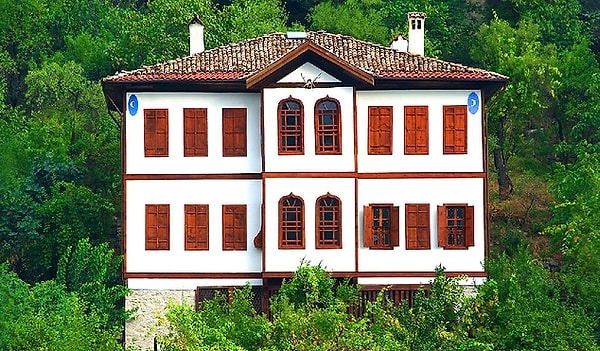
Mounds dating back to 3000 and 4000 BC show that Safranbolu has a long history of human settlement. Safranbolu was dominated by the Hittites, Phrygians, Persians, Romans, Seljuks, Cobanoğulları, Candaroğulları and the Ottoman Empire.
In 1326, Candaroğlu Süleyman Pasha became the head of Safranbolu and brought structures such as baths, madrasahs and mosques to Safranbolu, and these structures have survived until today. In 1354, the city, which was brought to the Ottoman lands by Osman Bey's son Şehzade Gazi Süleyman Pasha, entered Ottoman rule in 1423 during the reign of Sultan Murad II. After entering the Ottoman territory, Safranbolu was connected to the Bolu Sanjak.
In 1811, during the reign of Mahmud II, the Viranşehir sanjak was established, and the city was connected to it. Then, in 1870, it was connected to Kastamonu sanjak and the municipal organisation was established in the same year. In 1927, Safranbolu, which was connected to Zonguldak province as a district, was separated into two villages in 1945 and 1953, and these villages were turned into districts.
In 1939, with the opening of the Karabük Iron and Steel Factory, Karabük became a centre of interest, but Safranbolu was not much affected by the modern urbanisation in Anatolia in the 1950s. Safranbolu was connected to Karabük province in 1995.
The History of Safranbolu Houses
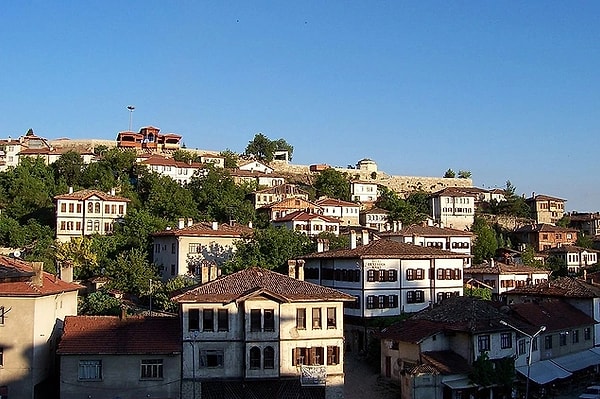
Safranbolu Houses are located in the Safranbolu district of Karabük province, in a town that has preserved the city life and historical Ottoman structure from the 18th and 19th centuries. On December 17, 1998, it was included in the UNESCO World Heritage List. During the Ottoman period, Safranbolu houses were made of egg whites and are said to be earthquake resistant. Safranbolu Houses are wonderful works that convey Turkish culture and family life.
The oldest name of Safranbolu is mentioned as Paplagonya in Homer's story called the Iliad. Since then Safranbolu has changed hands several times. Safranbolu was conquered by Muhiddin Mesut Shah, the son of the Seljuk sultan Kılıç Arslan II, in 1196. Turkmens migrated to this region from time to time. Its last known name is Zafranbolu. Safranbolu was richest during the period when the Ottoman Empire was dominant. The reason for this is that it was an important accommodation center on the Istanbul-Sinop caravan route in the 17th century. Cincin Inn was built in Safranbolu as it was an accommodation center.
The Effect of the Silk Road on Safranbolu Houses
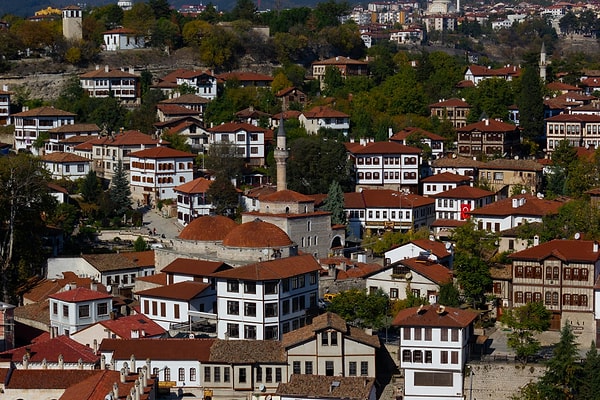
Safranbolu is a district of Karabük province in Turkey and is famous for its historical texture. The Silk Road is an important land route where trade has been carried out between Asia and Europe throughout history. Here is the effect of the Silk Road on Safranbolu Houses:
The Center of Trade: The Silk Road is a network that connects many important trade routes in history. Safranbolu was strategically located on the Silk Road. Silk trade made significant contributions to Safranbolu's economy. Thanks to the Silk Road, Safranbolu grew and prospered as a trade center.
Traces of Trade: With the influence of the Silk Road, many merchants, caravans and travelers visited the city during the periods of trade in Safranbolu. This interaction left traces in the architectural and cultural texture of Safranbolu. The materials used in the construction of houses, decorations and architectural styles can reflect the influences from the Silk Road.
Cultural Interaction: The Silk Road served as a bridge between different cultures. Safranbolu has been exposed to various cultural interactions because it is located on the Silk Road. The cultural diversity brought by trade and travel has created a richness in Safranbolu that reflects the combination of different cultural elements.
Accommodation and Trade Structure: Safranbolu, an important stopping point on the Silk Road, was a suitable place to meet the accommodation needs of merchants and caravans. Safranbolu Houses were used as accommodation and trade structures. These houses served as places where merchants used to store goods, rest and do business.
Historical Safranbolu Houses and Architectural Features

The famous Safranbolu houses were built with architectural information reflecting the history, culture, economy, technology and lifestyle of the 18th and 19th century Turkish society. Of the approximately 2000 traditional buildings in the city, 1008 are registered and under legal protection.
The registered historical houses of Safranbolu include 1 private museum, 25 mosques, 5 mausoleums, 8 historical fountains, 5 baths, 3 inns, 1 historical clock tower, 1 sundial and hundreds of houses and mansions. There are also mounds, historical bridges and rock tombs. Built in 1797 by Grand Vizier İzzet Mehmet Pasha, the clock tower and Hıdırlık Hill are visited by local and foreign tourists.
At the end of the 19th century, Safranbolu had 28 mosques, 2 Greek Orthodox churches, 13 lodges (Nakşibendiye and Halvetiye), 2 libraries, 191 schools with 2937 students, 12 Greek madrasahs, 8 Greek schools, 1 telegraph station, 24 inns, 11 baths, and 940 shops.
The historic city of Safranbolu has narrow streets and houses close to each other. Houses located in a valley do not block each other's sunlight.
The basements of the mostly two-storey houses are used for feeding animals or storing fuel and firewood. Private areas are located above. Ground floors are usually made of stone and have higher ceilings than the upper floors. If the house has three floors, the middle floor has relatively low ceilings. In addition, the windows of the houses are long and narrow.
How to get to Safranbolu?

Safranbolu is a district that can be easily reached from many provinces. The nearest airport to the Safranbolu district is Kastamonu Airport. Transportation to Safranbolu; Kastamonu Airport serves with Karabük Bus Station and Safranbolu Bus Station. Vacationers who want to reach Safranbolu by plane; After landing at Kastamonu airport, you need to take Karabük buses that make many trips throughout the day. Guests arriving at Karabük city center; You can reach Safranbolu by municipal buses departing from here every 15 minutes on weekdays. This journey takes an average of 2 hours.
How to get to Safranbolu by plane?
It is not possible to reach Safranbolu by plane. The airport to be transferred to reach Safranbolu by plane is Kastamonu Airport.
Kastamonu airport is located 136 km from Safranbolu city centre. There are no buses directly to the Safranbolu district centre at Kastamonu airport. From Kastamonu airport to Kastamonu bus station and from there to Safranbolu station, it is possible to take the buses running Kastamonu-Safranbolu services and municipal buses.
How is Transportation to Safranbolu by Bus?
There are direct bus services to Safranbolu from almost all provinces. Guests who want to visit Safranbolu; You can use the Safranbolu bus station, which is 2 km away from the Safranbolu city centre. Holidaymakers arriving at Safranbolu bus station; Safranbolu city centre, and the municipal buses passing by are easily accessible.
How to Visit Safranbolu by Private Car?
The Safranbolu district can be reached by private car from almost anywhere in Turkey. Guests who want to reach Safranbolu by their own vehicle; It is easily accessible from D765, D030, D010, E80 and D759 highways.
How Many Days Would be Enough?
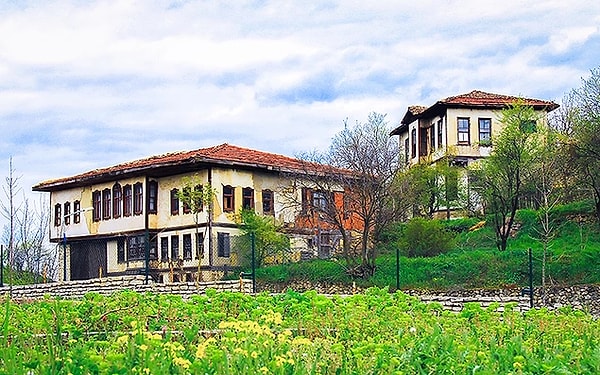
Safranbolu is a city to visit soon on the return journey of the Western Black Sea or Black Sea Tour. Due to its proximity to big cities, it is a weekend getaway. We recommend you visit for 1 night, 2 days and if possible, 2 nights, 3 days. If you have more time, it is useful to visit nearby Amasra, Bartın, Kastamonu and Yenice, one of the districts of Karabük.
When to visit to Safranbolu?

Safranbolu, which is under the influence of the Black Sea and continental climate, is very dry in summer. The temperature exceeds 20 degrees in summer, and there is a lot of precipitation in winter. In summary, January and February are the hottest months, while July and August are the hottest summer months.
What to eat in Safranbolu?
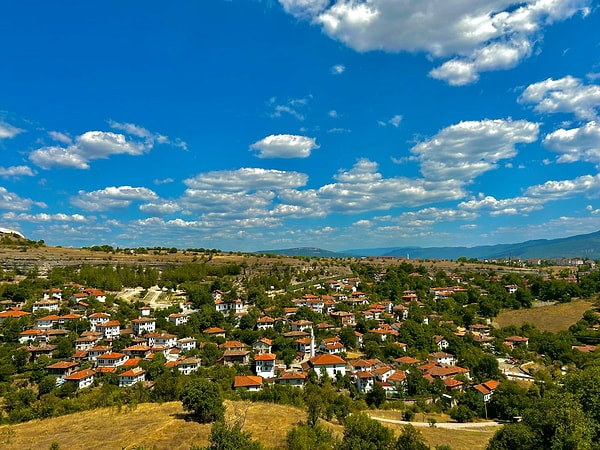
Safranbolu is a city that is home to a rich variety of Turkish cuisine.
Here are some of the traditional Safranbolu dishes you can taste here:
Safranbolu Bagel
Safranbolu Bending
Safranbolu Turkish Delight
Yayım, Peruhi and Walnut Baklava
Places to Stay When You Visit Safranbolu
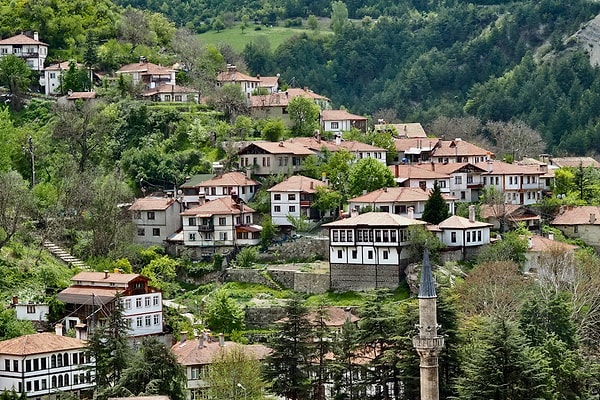
Safranbolu is one of Turkey's popular tourist destinations and offers a variety of accommodation options. Famous for its historical texture, Safranbolu attracts attention with its restored traditional mansions.
Here are some places to stay in Safranbolu:
Seyir Konak Otel
Hanedan Konak & Otel
Hilton Garden Inn Safranbolu
Nimet Hanım Konağı
Çeşmeli Konak Garden
Payidar Konak Ve Cafe
Park Hotel Safranbolu
Safranbolu Çamlıca Konağı
Akçe Konakları
Dadibra Konak
Paçacıoğlu Bağ Evi
Muhsin Bey Konağı
Yorgancıoğlu Konak
Gülevi Safranbolu Otel
Konak Bindallı
Asmalı Konak
Demirkapi Konak Otel
Şerbetçi Garden Konak
Emiroglu Konak
Safranbolu Yavuzlar Otel
Keşfet ile ziyaret ettiğin tüm kategorileri tek akışta gör!

Send Comment